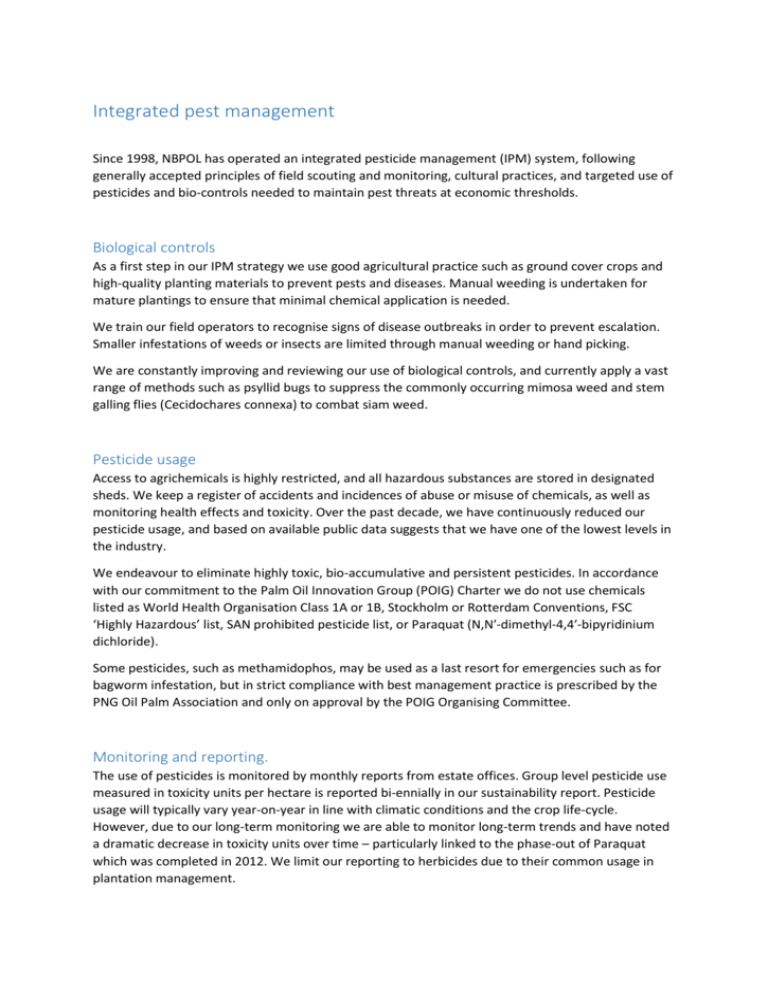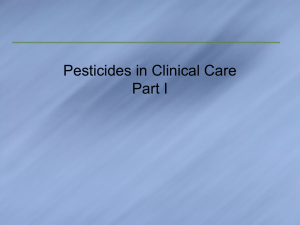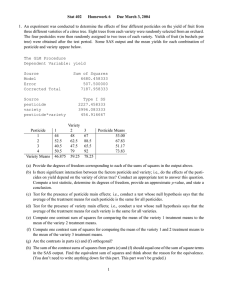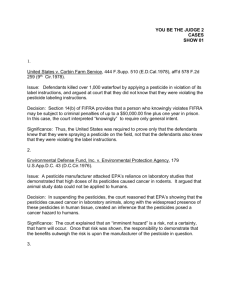Integrated Pest Management Report - NBPOL
advertisement

Integrated pest management Since 1998, NBPOL has operated an integrated pesticide management (IPM) system, following generally accepted principles of field scouting and monitoring, cultural practices, and targeted use of pesticides and bio-controls needed to maintain pest threats at economic thresholds. Biological controls As a first step in our IPM strategy we use good agricultural practice such as ground cover crops and high-quality planting materials to prevent pests and diseases. Manual weeding is undertaken for mature plantings to ensure that minimal chemical application is needed. We train our field operators to recognise signs of disease outbreaks in order to prevent escalation. Smaller infestations of weeds or insects are limited through manual weeding or hand picking. We are constantly improving and reviewing our use of biological controls, and currently apply a vast range of methods such as psyllid bugs to suppress the commonly occurring mimosa weed and stem galling flies (Cecidochares connexa) to combat siam weed. Pesticide usage Access to agrichemicals is highly restricted, and all hazardous substances are stored in designated sheds. We keep a register of accidents and incidences of abuse or misuse of chemicals, as well as monitoring health effects and toxicity. Over the past decade, we have continuously reduced our pesticide usage, and based on available public data suggests that we have one of the lowest levels in the industry. We endeavour to eliminate highly toxic, bio-accumulative and persistent pesticides. In accordance with our commitment to the Palm Oil Innovation Group (POIG) Charter we do not use chemicals listed as World Health Organisation Class 1A or 1B, Stockholm or Rotterdam Conventions, FSC ‘Highly Hazardous’ list, SAN prohibited pesticide list, or Paraquat (N,N′-dimethyl-4,4′-bipyridinium dichloride). Some pesticides, such as methamidophos, may be used as a last resort for emergencies such as for bagworm infestation, but in strict compliance with best management practice is prescribed by the PNG Oil Palm Association and only on approval by the POIG Organising Committee. Monitoring and reporting. The use of pesticides is monitored by monthly reports from estate offices. Group level pesticide use measured in toxicity units per hectare is reported bi-ennially in our sustainability report. Pesticide usage will typically vary year-on-year in line with climatic conditions and the crop life-cycle. However, due to our long-term monitoring we are able to monitor long-term trends and have noted a dramatic decrease in toxicity units over time – particularly linked to the phase-out of Paraquat which was completed in 2012. We limit our reporting to herbicides due to their common usage in plantation management. Insecticides, rodenticides and other pesticides are used infrequently, targeted, and limited in accordance with the restrictions set out by the RSPO P&C and the POIG Charter Indicators. Pesticides currently in use Herbicides Fungicides Rodenticides Insecticides Last updated: October 2015 Metsulfuron Methyl (Ally) 2,4-D Acid Amine Glufosinate (Basta) Glyphosate (Roundup) Fluroxypyr meptyl (Starane) Thiabendazole Thiram Brodifacoum (Kleran) Tetramethrin-phenothrin Permetrin Methamidiphos (Emergency use only) Acephate











